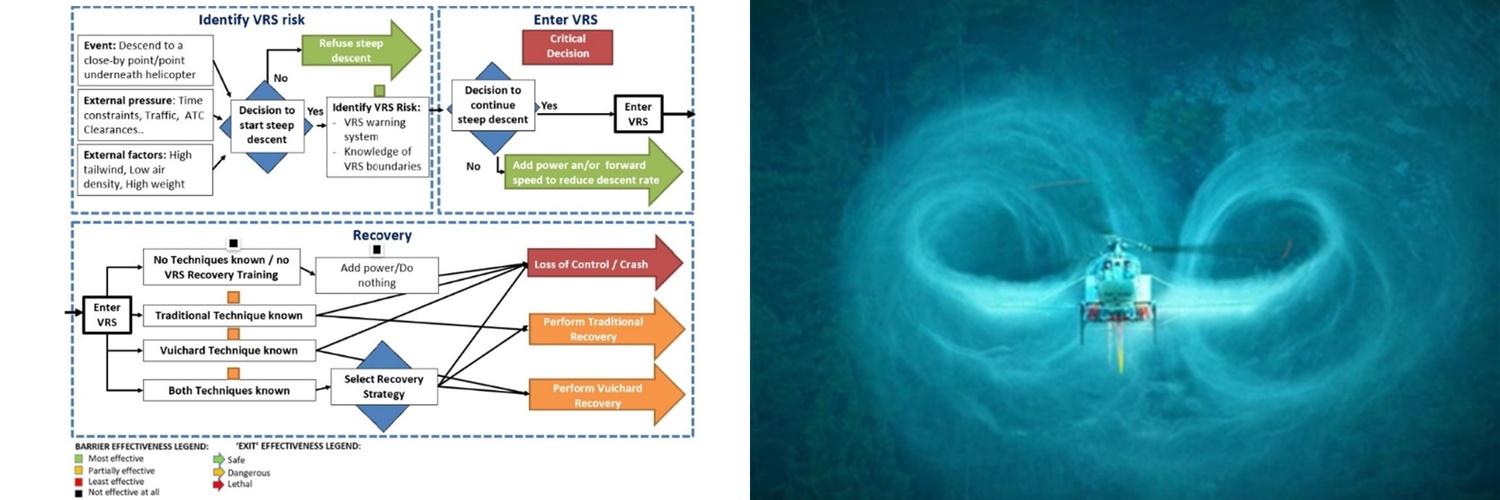
Vertical Flight Society Recognizes ASDL Helicopter Safety Paper
Vertical Flight Society Recognizes ASDL Helicopter Safety Paper

The ASDL paper “A Comparison of Traditional and Vuichard Vortex Ring State Recovery Techniques Using On-Line Simulation” was selected as the best paper in the safety session during the Vertical Flight Society’s 79th Annual Forum & Technology Display, which was held 16-18 May 2023, West Palm Beach, FL. The paper was written by graduate student Eleni Sotiropoulos-Georgiopoulos, Dr. Alexia Payan, Dr. Dimitri Mavris of ASDL and Charles Johnson of the FAA.
From 2008 to 2021, 48 helicopter accidents have involved Vortex Ring State (VRS) encounters in the United States, seven of them resulting in minor injuries, seven in serious injuries, and four in fatal ones, according to the National Transportation Safety Board (NTSB) reports database. Additionally, in all cases, the helicopter suffered at least substantial damage and, in three situations, the helicopter was destroyed.
The VRS aerodynamic phenomenon is a consequence of wake instability. It arises when the descending rotor first catches up with the disturbances in the wake, which then collapses from an ordered helical structure into an unsteady, chaotic re-circulating flow. As the VRS fully develops, the rotor is engulfed in a toroidal flow circulation pattern. This phenomenon is dangerous since the emergence of such vortices on the rotor blades induces a rapid loss of the main rotor lifting ability. VRS is mainly encountered in steep descents. Since such descents are usually performed near the ground, the identification of VRS onset and timely recovery with minimal loss of altitude are critical. Should the VRS develop, the intuitive reaction of increasing the collective will not stop the descent. On the contrary, the stalled area of the rotor will grow and result in an increased rate of descent. Hence, more involved VRS recovery techniques are required.
Two competing recovery techniques are currently taught in the helicopter community. The Traditional recovery technique is the most widespread and consists in lowering the collective and pitching down to establish forward flight speed and exit the vortex. The Vuichard recovery technique, on the other hand, aims at bringing the advancing rotor blade in the upward flow by slightly banking the helicopter and adding power while maintaining heading using opposite anti-torque pedal.
The objective of this research is to simulate and compare the Traditional and Vuichard recovery techniques both from an operational and from an aerodynamic perspective. The approach focused on the operational aspect through piloted simulations, which starts by defining flight control settings and evaluation metrics for each method and determining relationships between the two. Then, scenario-based simulations are developed and performed to identify pilot decision-making processes during a VRS encounter.
The event is the world’s leading international technical event on vertical flight technology, covering every discipline from acoustics to unmanned systems. During the event, Eleni also received one of the Vertical Flight Foundation (VFF) scholarships in the PhD category.
For more information about the Vertical Flight Society click here.
